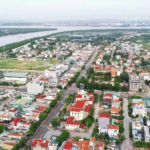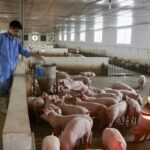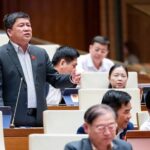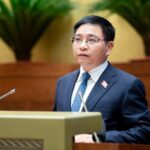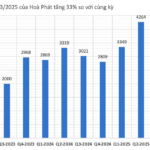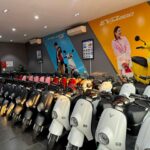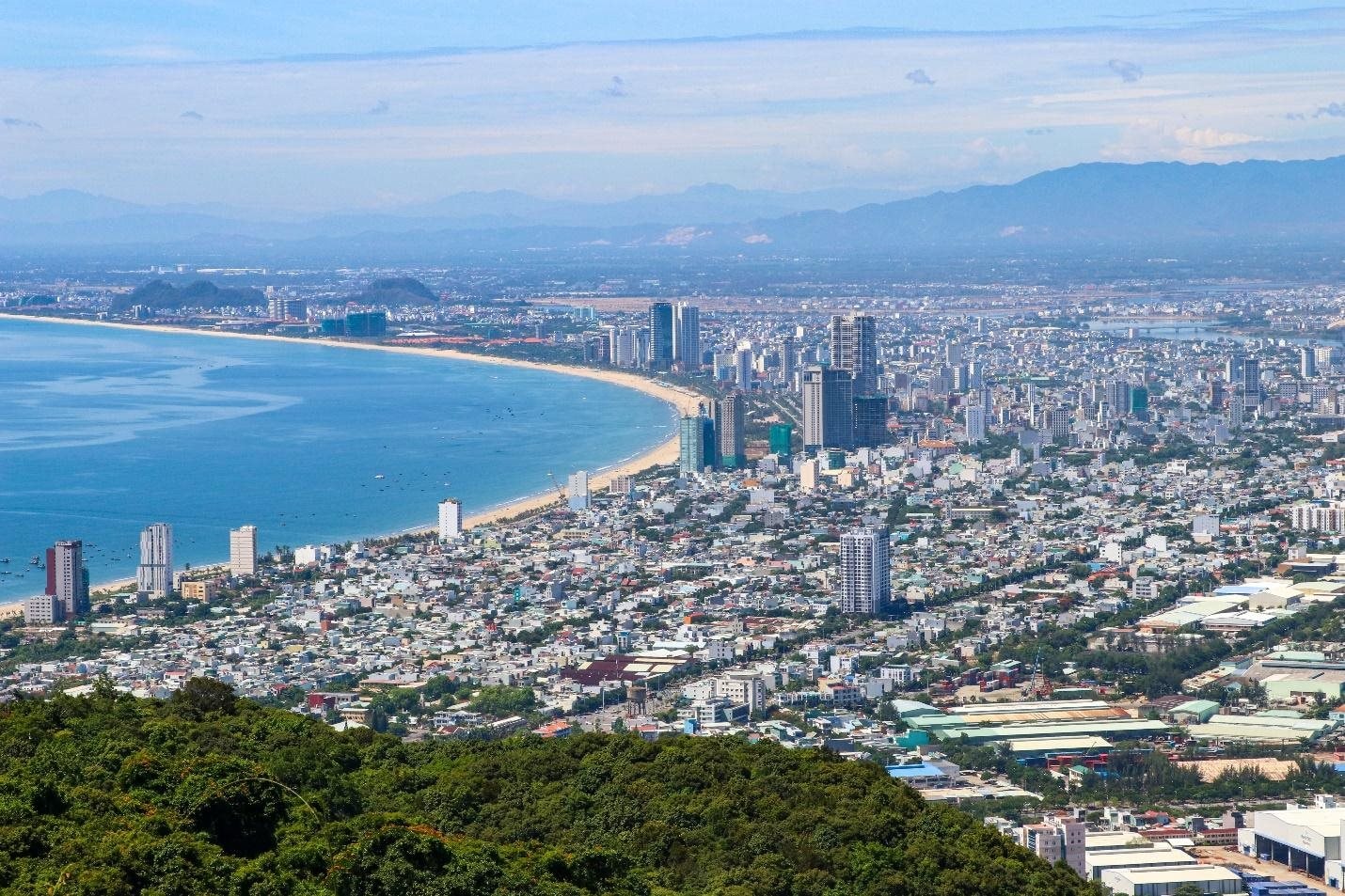
At the 7th session of the 15th National Assembly, Resolution 136 on the organization of urban administration and the pilot of a number of mechanisms and policies for the development of Da Nang city was passed, including the permission for Da Nang to pilot the establishment of the first Special Administrative-Economic Zone (SAEZ) in the country. This is expected to create a great impetus for the socio-economic development of Da Nang.
In early September, Prime Minister Pham Minh Chinh conducted a survey of several key projects in Da Nang, including the sea reclamation area near Nguyen Tat Thanh Street. This is one of the locations being considered for the establishment of the SAEZ.
Regarding the policy to build the Da Nang SAEZ, we had a discussion with Dr. Can Van Luc, Member of the Monetary and Financial Policy Advisory Council.
In the context of Da Nang’s development slowing down, there is a need to create new momentum. Resolution 136 allows Da Nang to pilot the establishment of an SAEZ, and the Prime Minister has also agreed to reclaim the sea to create a new development space. Do you think this is an opportunity for Da Nang to break through and reach international standards?
Da Nang city enjoys a favorable geopolitical and economic position, along with advantages in high-quality human resources, well-developed infrastructure, and a connected transport system within the region and the country. It is also one of the few localities with both an international seaport and airport and is located on the nation’s vital routes. These factors provide a conducive environment for economic development, investment, trade, services, and tourism.
The opportunity to pilot the establishment of an SAEZ will provide a strong impetus for Da Nang’s development. However, the magnitude of this impetus largely depends on Da Nang’s implementation capacity and the support of central ministries and sectors. Currently, the government is paying significant attention to Da Nang and has granted numerous favorable mechanisms and policies. The National Assembly’s issuance of Resolution 136 is a significant milestone, demonstrating the Party’s, National Assembly’s, and Government’s profound concern for Da Nang. Therefore, Da Nang needs to promptly and resolutely implement these policies effectively.
The central-level agencies and the city are urgently coordinating to finalize the proposal for the Da Nang SAEZ pilot project to submit to the Prime Minister by the end of 2024, as requested. Once the SAEZ is established, how will it facilitate Da Nang’s medium and long-term development, in your opinion?
The SAEZ is expected to create a development impetus, expand Da Nang’s economic scale, and have a positive impact on the Central Key Economic Region. With the SAEZ, Da Nang will contribute to promoting trade and foreign trade, particularly in Vietnam. Moreover, the SAEZ will have a far-reaching impact on various sectors, including logistics services, tourism, technology, education, finance, and even digital transformation.
I believe that one of the essential roles of the SAEZ is to increase Da Nang’s state budget revenue. By attracting prominent investors and both domestic and foreign investment, the SAEZ will foster economic development and create employment opportunities.
The Prime Minister has also agreed in principle with Da Nang’s need to reclaim the sea to create new land and expand its development space. In reality, many countries worldwide have successfully reclaimed the sea, such as Singapore and Dubai. In your opinion, what opportunities and development prospects will successful sea reclamation open up for Da Nang?
For now, regarding the SAEZ, Da Nang needs to promptly finalize the planning, land fund, site clearance, and compensation and resettlement, if necessary. At the same time, attention should be given to ensuring smooth transportation connections, both domestically and internationally, when expanding through sea reclamation and developing the SAEZ. We must also address current challenges before considering the opportunities that lie ahead.
Currently, several challenges exist. First, Da Nang needs to effectively implement the special mechanisms granted by the central government, drawing lessons from the experiences of other localities. Second, Da Nang should proactively secure the land fund and concretize the resolutions of the central government and the National Assembly through specific mechanisms and policies. Third is the issue of human resources, which is closely linked to infrastructure development. With the establishment of the SAEZ, there must be a corresponding upgrade and development of both physical and digital infrastructure.
Lastly, the SAEZ must also ensure a certain level of greening and sustainability. Therefore, careful consideration and effective implementation are required regarding investor screening, the development of green trade and a green SAEZ, etc.
Apart from the SAEZ, creating a large-scale sea reclamation area to serve multi-functional development will contribute to Da Nang’s economic growth. How do you think this will play out?
The permission for sea reclamation provides a new direction to promote and diversify Da Nang’s economy. This area can integrate multiple functions, such as constructing a financial center, a digital economic cluster, iconic structures, or developing high-end tourism and services. Sea reclamation has been practiced worldwide for a long time, offering numerous benefits to both the people and the state. For instance, Singapore now has a quarter of its land area due to sea reclamation. The remarkable development of Dubai (UAE), South Korea, and Japan also bears the imprint of sea reclamation and artificial islands.
Recently, the Proposal on Building a Regional and International Financial Center in Vietnam, presented by the Party Committee of the Government, was approved in principle by the Politburo. Accordingly, the comprehensive International Financial Center will be located in Ho Chi Minh City, while Da Nang will host the Regional Financial Center. Developing a financial center requires an open and synchronized ecosystem rather than merely constructing a few buildings because numerous electronic and digital financial transactions are already taking place across borders. In this context, modern financial services, payment infrastructure, connectivity, logistics infrastructure, and human resources must be considered.
Therefore, Da Nang needs to carefully and synchronously address all these issues, including identifying the key financial products and services that this financial center will provide, such as Fintech, payments, and supply chain financing. If Da Nang successfully establishes the SAEZ, the regional financial center, and large-scale reclamation projects, it will have the strength and potential to achieve breakthrough development in the future.
Thank you for your insights!
The High-Speed Rail Project: Ensuring Profitable Investments for Vietnam’s Transportation Revolution
It is imperative to devise a strategy for the effective implementation of the high-speed rail project. We must ensure that this significant investment does not result in inefficient operations and financial losses. A well-thought-out plan will guarantee the project’s success and profitability.
Crafting a Captivating Workforce for the High-Speed Rail Project: A Prelude to Success
The government proposes the construction of a new double-track railway with a standard gauge of 1,435 mm, electrified and designed for speeds of up to 350 km/h. The construction is slated to begin in 2027, and one of the key challenges is the preparation of a skilled workforce, which is estimated to require over 14,000 personnel.


























